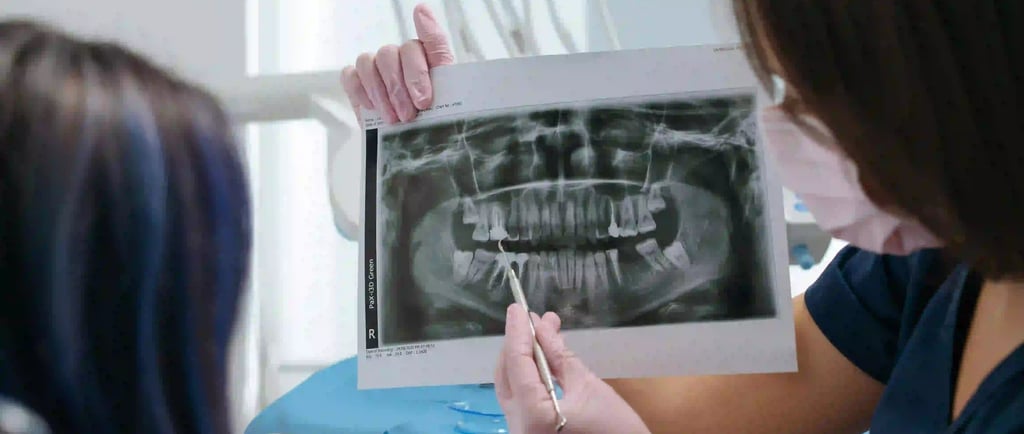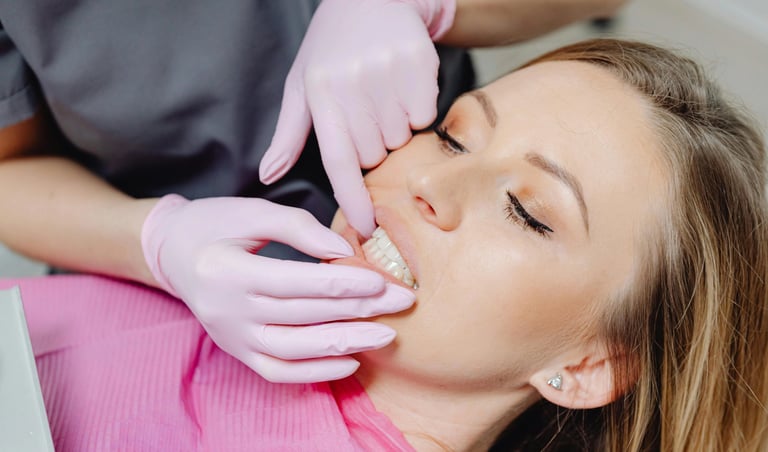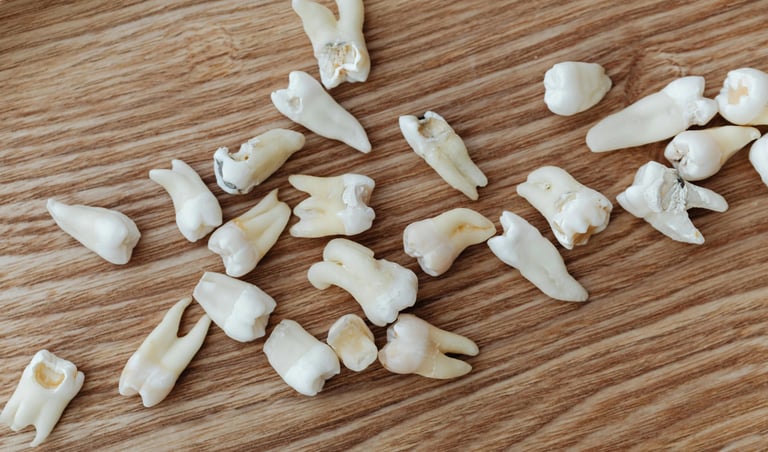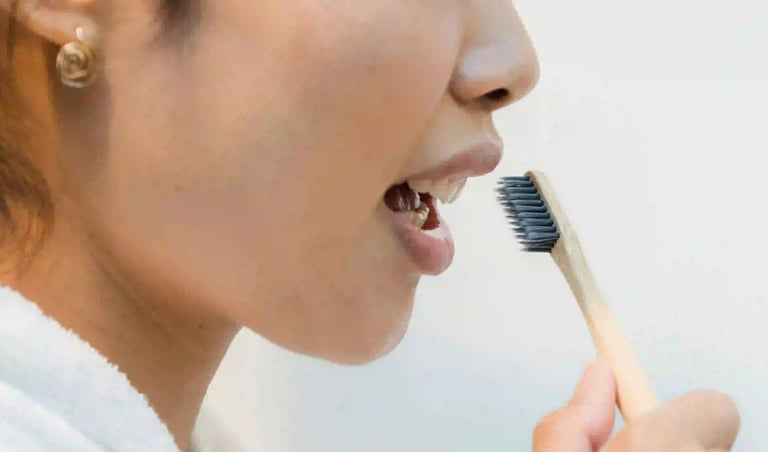Decoding Teeth and Gum Health: Essential Tips For Oral Health
Unlock the secrets to amazing oral health with essential tips for teeth care and gum disease prevention. Transform your smile and maintain healthy gums with our expert advice on decoding teeth and gum health!
7/9/20256 min read


Your Smile's Silent Storyteller
Have you ever really looked at your smile in the mirror? Not just the fleeting glance as you brush, but a real, curious look? Our smiles are often the first thing people see, a universal greeting.
But what if I told you your smile is doing more than just greeting the world? What if it's actually telling a story? A deeply personal narrative about your health, whispered through the color of your gums, the texture of your tongue, the strength of your teeth?
It sounds a bit like science fiction, doesn't it? Yet, it's true. Your mouth, a complex ecosystem of tissues, bone, and bacteria, acts like a window into your body's overall well-being. Learning to understand this "secret language" is key to not just a dazzling smile, but potentially catching health issues early. We're going to delve into this fascinating world, decoding teeth and gum health together, and uncover the simple yet profound messages your mouth is sending you.
The Telltale Signs: Are Your Gums Happy?
Let's start with the foundations: your gums. Healthy gums are the bedrock of a healthy mouth. So, what should you look for? What do healthy gums look like?
Think pink healthy gums are typically a coral pink color. They should look firm and stippled, almost like the skin of an orange peel, not puffy or swollen. When you brush or floss, they shouldn't bleed. If they do, that's your gums waving a little red flag.
Bleeding gums, especially when brushing, are often one of the earliest signs of gum disease, specifically gingivitis. It's your body's inflammatory response to plaque buildup along the gumline. Many people dismiss a little blood, thinking they've just brushed too hard. But persistent bleeding is a signal you shouldn't ignore.
Left unchecked, gingivitis can progress to periodontitis, a more severe form of gum disease that can damage the bone supporting your teeth. This can lead to teeth loosening or even falling out. According to the CDC, nearly half of adults aged 30 or older show signs of gum disease.
Other signs your gums might not be happy include:
Redness or swelling
Receding gums (teeth look longer)
Persistent bad breath
Pus between teeth and gums
Loose teeth (in later stages)
Recognizing these signs early is crucial. It gives you the power to take action before the problem becomes harder to manage.
"Your gums are like the frame around a beautiful picture. If the frame is damaged, the picture suffers. Healthy gums are essential for keeping your teeth securely in place."
Beyond White: Healthy Teeth Indicators
Now, let's turn our attention to the stars of the show: your teeth. We often focus on whiteness, but that's just one small part of the story. What are the real healthy teeth indicators?
Color: While bright white isn't the only healthy color (natural tooth enamel has a slightly yellowish tint), significant discoloration, dark spots, or chalky white spots can indicate issues like decay or demineralization.
Surface: Teeth should feel smooth when you run your tongue over them. Rough spots, pits, or chips can be areas where bacteria can hide and decay can start.
Sensitivity: Occasional sensitivity to hot or cold is normal, but sharp, persistent pain or sensitivity could signal cavities, exposed roots (due to gum recession), or even a cracked tooth.
Alignment & Spacing: While not purely about health, severely misaligned or crowded teeth can make cleaning difficult, increasing the risk of decay and gum problems.
Bad Breath (Halitosis): Yes, bad breath isn't just embarrassing; it's a major indicator of oral health issues. Persistent bad breath is often caused by bacteria breaking down food particles in your mouth, on your tongue, or trapped in periodontal pockets. While diet plays a role, stubborn bad breath is a sign something isn't right.
Can your smile show your overall health? Absolutely. Conditions like diabetes can manifest in the mouth as increased susceptibility to infections and slower healing. Dry mouth, often caused by medications or certain diseases, dramatically increases the risk of cavities and gum disease. Even stress can contribute to teeth grinding (bruxism) or jaw clenching, leading to dental problems.
Decoding Teeth and Gum Health: Your Action Plan
Understanding the signs is the first step. Taking action is the next. Here's how you can actively participate in decoding teeth and gum health and improve your oral well-being:
Brush Smart: Brush for two minutes, twice a day, using fluoride toothpaste. Use soft bristles and gentle, circular motions. Don't forget your tongue!
Floss Daily: This is non-negotiable! Flossing removes plaque and food particles from between teeth and under the gumline where your brush can't reach. It's your best defense against gum disease.
Consider Mouthwash: An antimicrobial mouthwash can help reduce bacteria, but it's a supplement, not a replacement, for brushing and flossing.
Eat a Mouth-Friendly Diet: Limit sugary snacks and drinks, which fuel the bacteria that cause cavities. Foods rich in calcium and Vitamin D support tooth and bone health. Crunchy fruits and vegetables can help clean teeth naturally.
Stay Hydrated: Drinking water, especially after meals, helps wash away food particles and neutralizes acids.
Avoid Tobacco: Smoking and chewing tobacco significantly increase the risk of gum disease, oral cancer, and tooth decay.
Regular Dental Checkups: Visit your dentist every six months for a professional cleaning and exam. They can spot problems you might miss and provide personalized advice.
"Oral health isn't separate from overall health; it's an integral part of it. Treating your mouth with care is an investment in your whole body."
Practical Tips for Daily Care
Let's break down some simple, actionable steps you can implement starting today:
Toothbrush Check: Is your toothbrush frayed? Replace it every 3-4 months, or sooner if the bristles are worn.
Flossing Technique: If you struggle with traditional floss, try interdental brushes or a water flosser. Find what works for you!
Look and Feel: Get in the habit of looking at your gums and teeth regularly while brushing. Notice any changes in color, texture, or sensitivity.
Listen to Your Breath: Ask a trusted friend or family member if your breath is consistently bad, or do the "lick test" on your wrist. Persistent bad breath needs attention.
Rinse After Sweet Treats: Can't resist that cookie? Rinse your mouth thoroughly with water afterward to help remove sugar.
How to check for cavities at home? While you can look for dark spots or feel for rough patches with your tongue, you cannot definitively diagnose a cavity at home. Early cavities are often invisible and require a dentist's examination and X-rays. This is why regular checkups are so important.
What does bad breath mean for oral health? As mentioned, it often means bacteria are thriving in your mouth. This could be due to poor cleaning habits, gum disease, dry mouth, or even underlying systemic issues. Don't just mask it; find the cause.
A Product We Trust
Maintaining a healthy balance of bacteria in your mouth is crucial, as we've discussed. While brushing and flossing are foundational, sometimes we need extra support to nurture beneficial bacteria. We've found that ProDentim offers a unique approach to oral health by focusing on populating the mouth with probiotic strains known to support gum and tooth health. If you're looking for a way to give your oral microbiome a helping hand, we highly recommend you check out ProDentim for yourself, Click the link or the button below to check it out.
Final Thoughts
Your smile is a powerful communicator, constantly providing feedback on your oral and often overall health. By learning its secret language, recognizing the signs of gum disease and the markers of healthy teeth, you gain valuable insights and the ability to take proactive steps.
Don't wait for pain or obvious problems. Start paying closer attention to the subtle cues your mouth is sending you today. A little awareness and consistent care go a long way in ensuring your smile remains not just beautiful, but a true reflection of vibrant health.
Look in the mirror tonight and really see your smile. What story is it telling you?










Health and Wellness
Your trusted source for health and fitness.
Connect
contact: beahealth.it@gmail.com
© 2025. All rights reserved.
